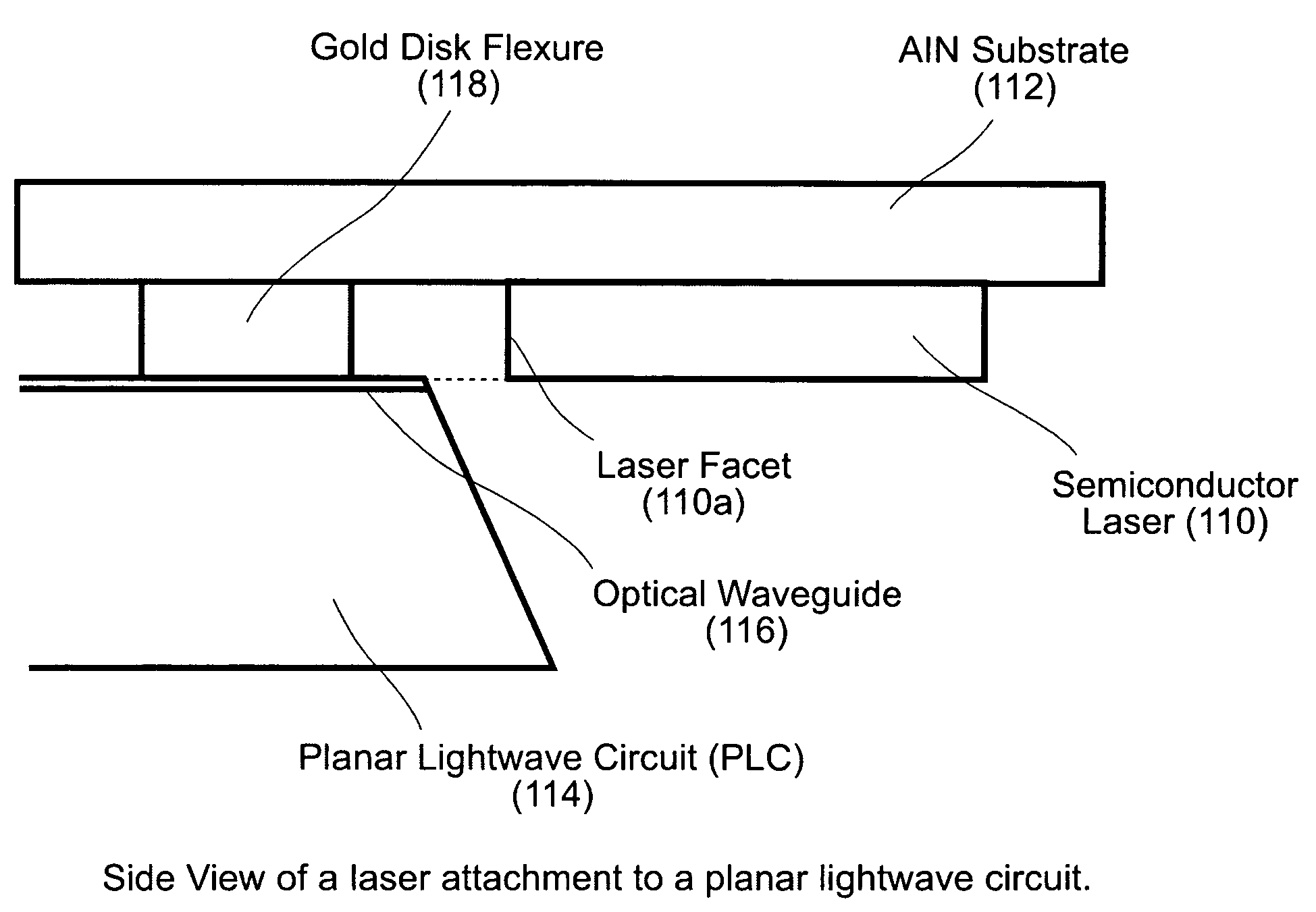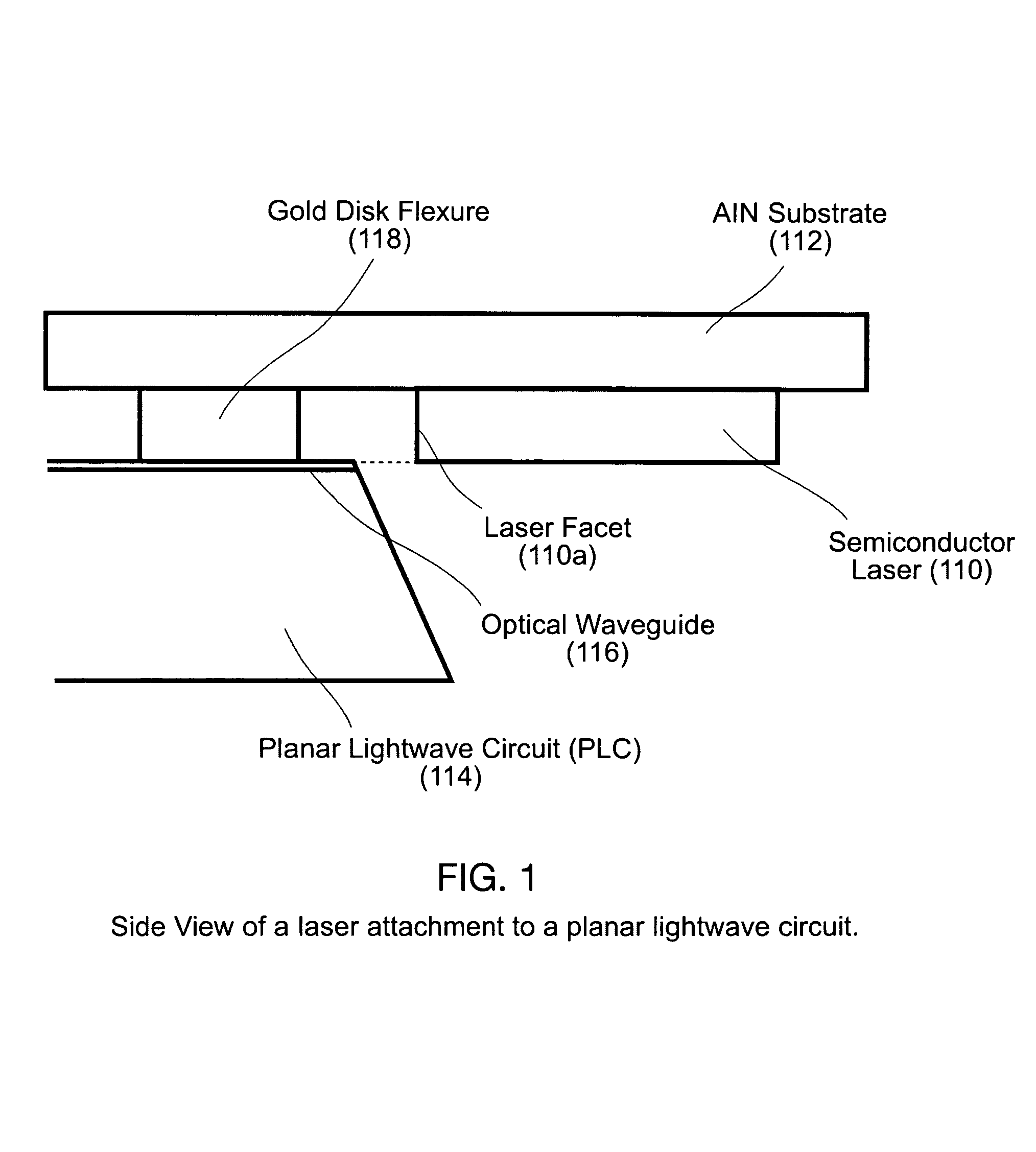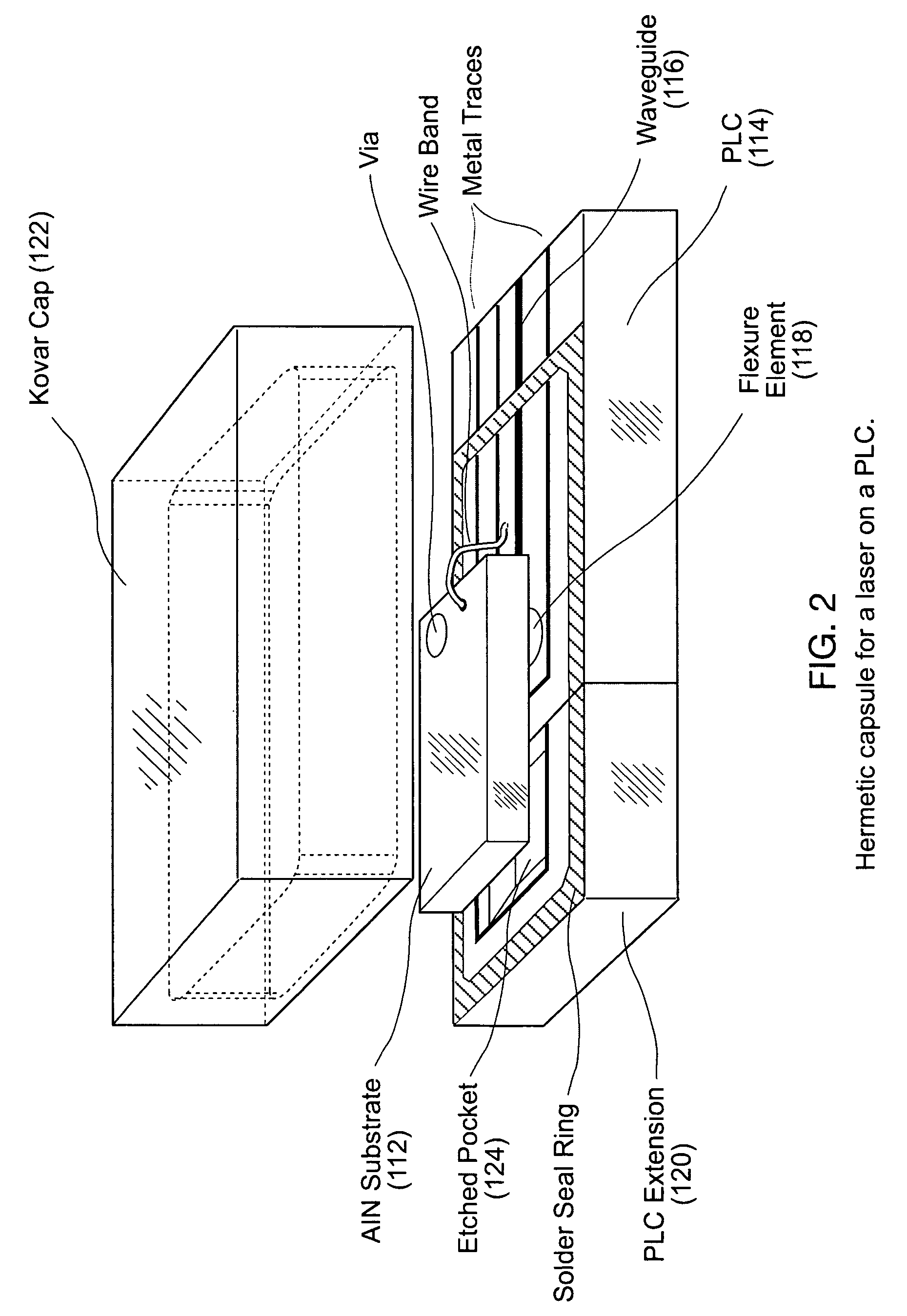Active optical alignment and attachment thereto of a semiconductor optical component with an optical element formed on a planar lightwave circuit
a semiconductor optical component and optical element technology, applied in the field of fiber optics, can solve the problems of difficult to achieve high-efficiency coupling, high cost of achieving proper alignment between the bulk element and the plc, and severe mechanical tolerance for adequate optical alignment in such systems
- Summary
- Abstract
- Description
- Claims
- Application Information
AI Technical Summary
Benefits of technology
Problems solved by technology
Method used
Image
Examples
Embodiment Construction
[0037]The present invention attaches and aligns a bulk element such as a semiconductor laser to an optical component formed on a PLC. While the bulk element will be described below for illustrative purposes only as a semiconductor laser, the bulk element alternatively may comprise a variety of different active and / or passive elements that process an optical beam. For example, active devices include semiconductor lasers and amplifiers, light emitting diodes, as well as other devices offering higher levels of functionality. Passive devices include beam splitters, thin films, filters, mirrors, birefringent material, polarizers, and diffractive elements, for example.
[0038]As detailed below, the bulk element is first attached to its own substrate in a conventional manner and the resulting subassembly is bonded to the PLC via a bendable or flexure element of low yield strength that allows for active optical alignment. Active alignment is then achieved by moving the bulk element into its p...
PUM
| Property | Measurement | Unit |
|---|---|---|
| diameter | aaaaa | aaaaa |
| size | aaaaa | aaaaa |
| optical coupling efficiency | aaaaa | aaaaa |
Abstract
Description
Claims
Application Information
 Login to view more
Login to view more - R&D Engineer
- R&D Manager
- IP Professional
- Industry Leading Data Capabilities
- Powerful AI technology
- Patent DNA Extraction
Browse by: Latest US Patents, China's latest patents, Technical Efficacy Thesaurus, Application Domain, Technology Topic.
© 2024 PatSnap. All rights reserved.Legal|Privacy policy|Modern Slavery Act Transparency Statement|Sitemap



